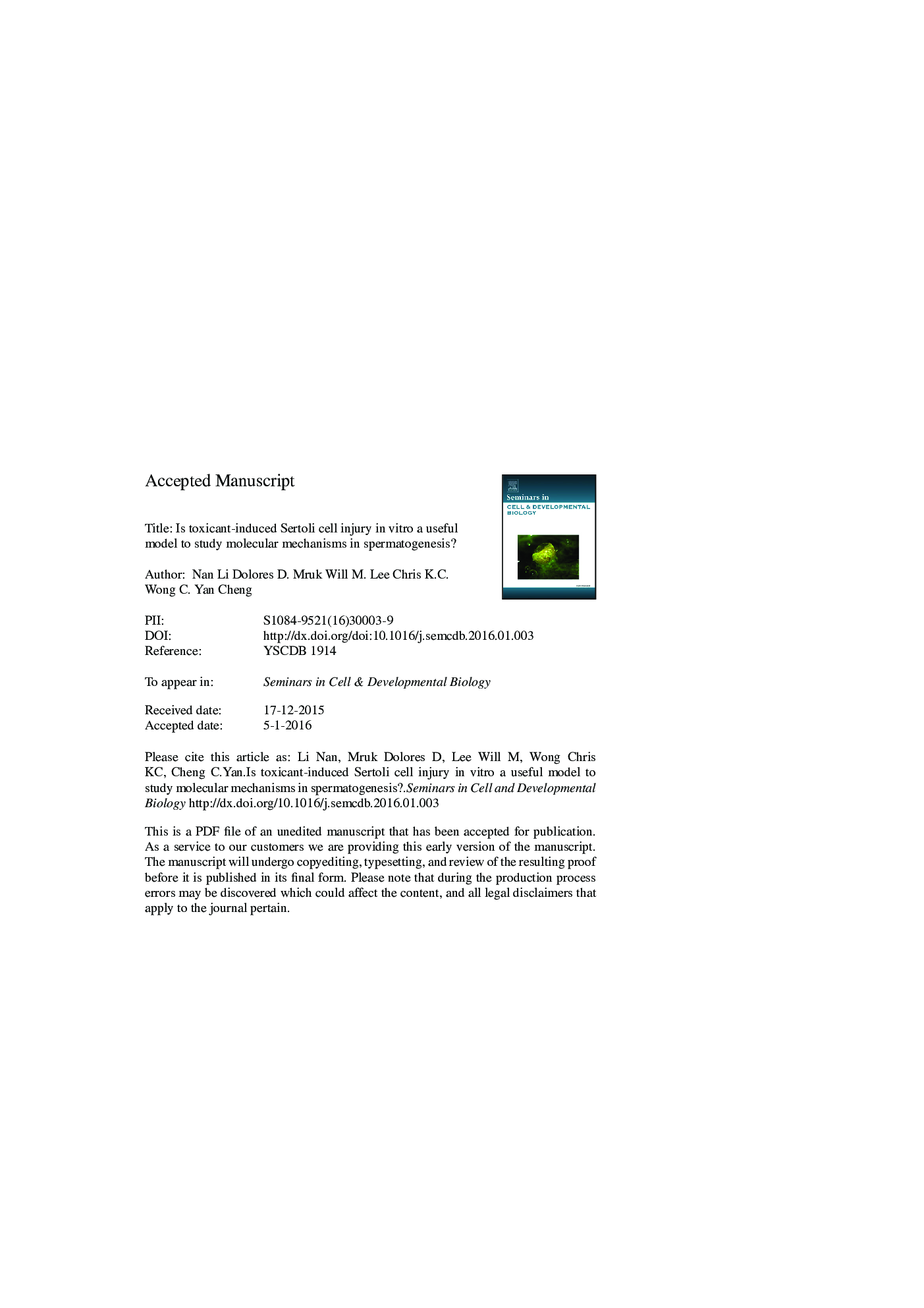| Article ID | Journal | Published Year | Pages | File Type |
|---|---|---|---|---|
| 5534979 | Seminars in Cell & Developmental Biology | 2016 | 50 Pages |
Abstract
Sertoli cells isolated from rodents or humans and cultured in vitro are known to establish a functional tight junction (TJ)-permeability barrier that mimics the blood-testis barrier (BTB) in vivo. This model has been widely used by investigators to study the biology of the TJ and the BTB. Studies have shown that environmental toxicants (e.g., perfluorooctanesulfonate (PFOS), bisphenol A (BPA) and cadmium) that exert their disruptive effects to induce Sertoli cell injury using this in vitro model are reproducible in studies in vivo. Thus, this in vitro system provides a convenient approach to probe the molecular mechanism(s) underlying toxicant-induced testis injury but also to provide new insights in understanding spermatogenesis, such as the biology of cell adhesion, BTB restructuring that supports preleptotene spermatocyte transport, and others. Herein, we provide a brief and critical review based on studies using this in vitro model of Sertoli cell cultures using primary cells isolated from rodent testes vs. humans to monitor environmental toxicant-mediated Sertoli cell injury. In short, recent findings have shown that environmental toxicants exert their effects on Sertoli cells to induce testis injury through their action on Sertoli cell actin- and/or microtubule-based cytoskeleton. These effects are mediated via their disruptive effects on actin- and/or microtubule-binding proteins. Sertoli cells also utilize differential spatiotemporal expression of these actin binding proteins to confer plasticity to the BTB to regulate germ cell transport across the BTB.
Keywords
Related Topics
Life Sciences
Biochemistry, Genetics and Molecular Biology
Cell Biology
Authors
Nan Li, Dolores D. Mruk, Will M. Lee, Chris K.C. Wong, C. Yan Cheng,
